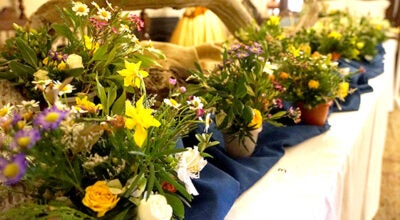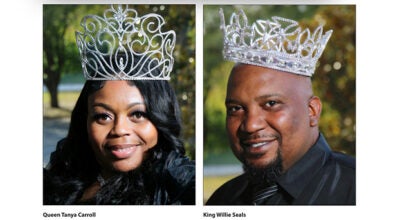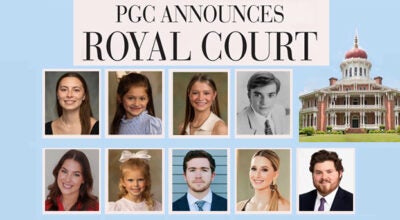Archeology students dig in Church Hill
Published 12:11 pm Wednesday, June 13, 2012

LAUREN WOOD | THE NATCHEZ DEMOCRAT Kristine Santos, who will be a senior at the University of North Carolina Chapel Hill, scrapes away dirt in a cutout in Mound B June 6 at the archeological dig site near Church Hill. Santos is one of a group of students from UNC participating in the dig as a summer course for five weeks. (Photo by Lauren Wood \ The Natchez Democrat)
NATCHEZ — For years to come, professional and student archeologists will study field notes and artifacts in labs to learn how the people who built mounds near Church Hill lived their lives.
But for nearly a month, a group of students mostly from the University of North Carolina have been digging for evidence on their hands and knees using some very simple tools like shovels and sifters as well as some more technology-savvy devices.
For every day in the field, archeologists spend an average of five or six days working in a lab, University of North Carolina doctoral student Meg Kassabaum said.

University of North Carolina Chapel Hill student Victoria Wilson scrapes dirt down in the cutout in Mound B at the archeological site June 6 near Church Hill. The group of students participating in the dig were doing field work on three Native American mounds. (Photo by Lauren Wood \ The Natchez Democrat)
“The field is what rejuvenates me,” she said.
Kassabaum has been excavating the three mounds at the Feltus site since 2006.
Based upon the analysis of pottery and animal bones found at the site, Kassabaum believes that the Indians who built the mounds may have gathered there periodically for feasting.
The more than 1,000-year-old mounds were used between 8750 and 1050 A.D., UNC archeology professor Vin Steponaitis said.
Steponaitis first visited the Feltus mounds as an undergraduate student in 1972. In fact, it was the first dig of his career and one that encouraged him to pursue the profession, he said.
The site has been excavated since as early as 1850, but the mounds keep delivering samples of history that Kassabaum said helps archeologists like her “put the people back in the site.”
The three mounds and a fourth one, which is no longer standing since the late 1940s, seem to have deliberately been built north, south, east and west around a flat grassy area, that Steponaitis called a plaza.
By cutting a triangular slice in the side of the mounds, the students were able to learn more about the process of how it was constructed, which was apparently in layers.
“They’re like layer cakes,” Steponaitis explained. “If you cut a slice of the cake you can expect to know what the rest is like.”
Steponaitis said the mounds were likely built by a large group of people delivering one basket of mound fill at a time, suggesting a communal effort.
Steponaitis said the mounds were likely used as a community gathering places rather than as a residential village. One piece of evidence of this is based on pits containing pottery pieces and animal bones, which could have served as a trash-fill pit.
Kassabaum said evidence they gather will hopefully help give insight into whether the community that used the mounds was structured as egalitarian or had more of a hierarchy.
“We don’t know for sure, but (the society that used the site) seems to be really communal,” Kassabaum said.
She said she hopes new evidence combined with research from as far back as 1850 will help her understand more about the social structure of the community.
John O’Hear, an archeologist from the University of Mississippi working at the site, said a device measuring magnetism gave the students a tip that a pit of bones and other items was buried.

University of North Carolina Chapel Hill graduate student Meg Kassabaum holds up sherds of pottery found during the five-week archeological dig June 6 near Church Hill. (Photo by Lauren Wood \ The Natchez Democrat)
Last week, students sprayed some of the excavated sites with a mist of water before taking photographs that they would later study. Each night, the students covered sites up until returning back to the Natchez Children’s Home, where they have been staying in Natchez. And the next morning the students were ready for an approximately eight-hour shift. The group re-fills the sites upon completing the five-week excavation project, which is funded in part by the Mississippi Department of Archives and History.
Steponaitis said the Lower Mississippi Valley is the richest archeological site in North America and has the most mounds in the Western Hemisphere.
Kassabaum said she will base a 300- to 400-page doctorate thesis on her findings at the Feltus mounds, so these few weeks in the dirt are especially meaningful and exciting.
Being able to dig in the dirt and be outside in the field reminds Kassabaum of why she entered the profession. In the fifth grade when she dug up an old grenade in her back yard near St. Louis, her teacher encouraged her to research it and write a report on her find.
The profession lets her enjoy the childlike excitement of digging outside and finding things, and her adult sensibility enjoys connecting with the past and the people who once lived at the site. When she’s standing on the mound, Kassabaum said she gets a much better mental picture of what life was like than she does in a lab hundreds of miles away.
“(Archeology) is perfect way to combine being a kid with a serious sort of academic scholar,” Kassabaum said.

Andrew Craig, a sophomore at University of North Carolina Chapel Hill, stands in the cutout of a mound as he helps take the elevation measurement June 6 near Church Hill. (Photo by Lauren Wood \ The Natchez Democrat)
She also said she wouldn’t be surprised if she continued to come to Natchez the rest of her career.
“Natchez is the coolest field town,” she said.
The local interest in history and in out-of-towners is something she has found unmatched in any other field site.





